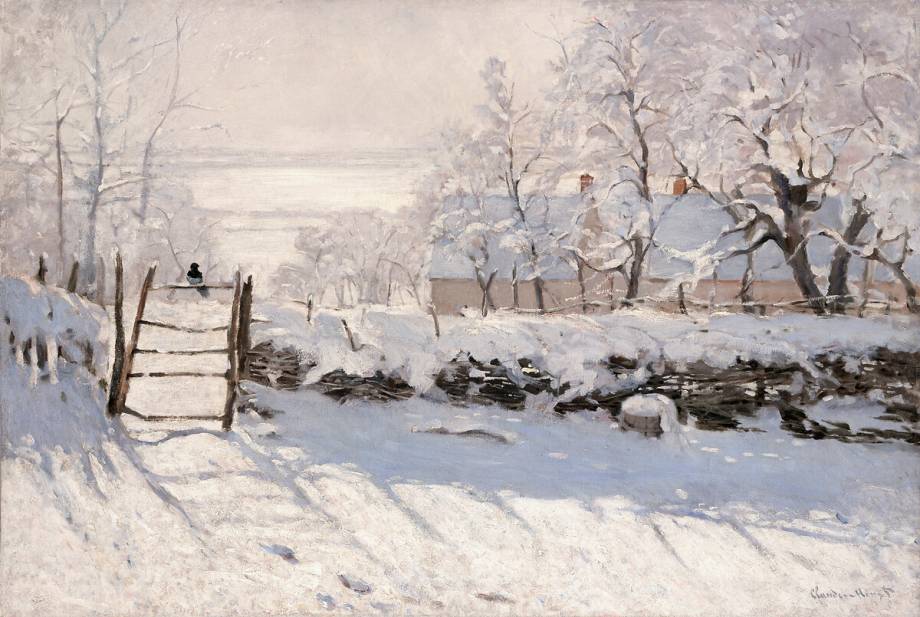Shop art print and framed art The magpie by Claude Monet
Customise
Your art print
The magpie OF Claude Monet
The magpie
Claude Monet's magpie : an impressionist wonder
The Magpie is a painting created by Claude Monet in 1868-1869, during his years spent in Étretat, Normandy. The work depicts a winter scene, with a magpie perched on a fence as snow covers the surrounding landscape. The composition of the canvas highlights the relationship between light and shadow, creating graphic visual rhythms on the snow. At the time, the subject of the snowy landscape was a real challenge, and one that Gustave Courbet took up shortly before Monet. While the former had used the snowy landscape as a backdrop for realistic hunting scenes, Monet interprets winter nature in a simpler, more contemplative sense.
The technique used for La pie
La pie is a painting made with oil on canvas. Monet used quick, expressive brushstrokes combined with a restrained but accurate colour palette, capable of bringing this snowy scene to life. The use of touches of pure white to represent the snow is particularly remarkable, as it highlights the contrasts between the effects of light and shadow on the snow. The snow also presented the painter with the challenge of its texture: half solid, half liquid, the snow covering the gate, the hedge, the trees and the surrounding countryside make the painting appear like a speckled white page. Finally, the magpie perched on the fence seems like a musical note set to a musical score.
The importance of The Magpie in the Impressionist movement
Considered a true masterpiece of the Impressionist movement, The Magpie is often cited as a representative example of this artistic movement. Indeed, this painting perfectly embodies the ideals and techniques promoted by the Impressionists, particularly with regard to the attention paid to lighting effects and the desire to capture fleeting moments. Eager to capture not just the image of a landscape, but above all the "feeling", Monet influenced artists such as Pissarro, Renoir and Sisley with his clear painting.
The reception and influence of La pie
The iconographic and technical audacity of this painting by Monet explains the rejection of the canvas by the jury of the 1869 Salon. Despite its lukewarm reception, this work is today considered a true French heritage treasure and is part of the permanent collections of the Musée d'Orsay in Paris.
This artwork is a painting from the modern period. It belongs to the impressionism style.
« The magpie » is kept at Musee d'Orsay, Paris, France.
Find the full description of The magpie by Claude Monet on Wikipedia.



































